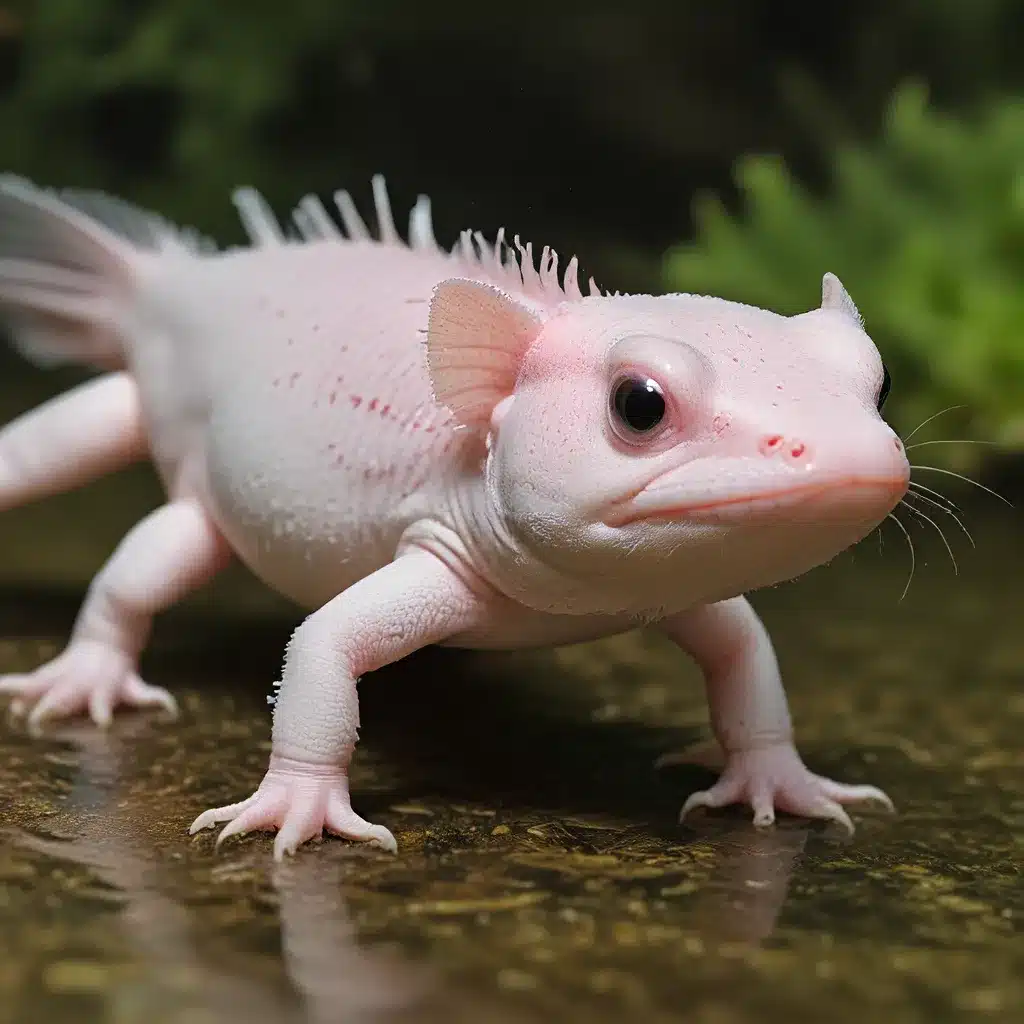
The Remarkable Regenerative Powers of an Unlikely Hero
Have you ever heard of the axolotl? You know, that peculiar-looking amphibian that looks like a cross between a frog and a dragon? Well, let me tell you, these little guys are the superheroes of the animal kingdom. And trust me, their story is way more fascinating than any comic book character.
Chonk the Axolotl: A Social Media Sensation
Let’s start with the most recent axolotl star, a little guy named Chonk. As you may have heard, Chonk is the latest social media sensation, with a growing legion of fans on Twitter who can’t get enough of his adorable, baby-faced appearance. According to a UC Davis podcast episode, Chonk is helping scientists uncover the secrets of neural crest cells – the cells that give our faces and skin their unique characteristics. By studying Chonk and other axolotls, researchers hope to better understand certain congenital disorders and types of cancer.
But Chonk is just the tip of the iceberg when it comes to the amazing abilities of these creatures. You see, the axolotl is no ordinary amphibian – it’s a veritable superhero in the animal kingdom.
The Axolotl’s Remarkable Regenerative Abilities
One of the most incredible things about the axolotl is its ability to regenerate. And I’m not just talking about regrowing a lost limb or tail – these guys can regenerate entire body parts, including their heart, brain, and spinal cord. Imagine if you could lose a finger and have it grow back, good as new! That’s the kind of superpower we’re talking about here.
Recent research has shown that even larger animals, like alligators, can partially regenerate their tails. But the axolotl takes this ability to a whole new level. These remarkable creatures can regrow lost limbs with near-perfect precision, restoring the original bone, muscle, and nerves. It’s a level of regeneration that puts even the most advanced human medical treatments to shame.
Unlocking the Secrets of Regeneration
So, what’s the secret behind the axolotl’s incredible regenerative powers? Well, it turns out that these amphibians possess a unique set of stem cells that can transform into any type of cell in the body. These “master” cells are able to divide and differentiate, allowing them to replace damaged or lost tissues with virtually identical structures.
Researchers are fascinated by the axolotl’s regenerative abilities, and they’re working hard to uncover the underlying mechanisms. By understanding how these amazing creatures can regrow their limbs, scientists hope to one day unlock the key to human tissue regeneration. Imagine the possibilities – lost limbs, damaged organs, even spinal cord injuries could all potentially be healed, just like the axolotl.
The Axolotl’s Evolutionary Advantage
But the axolotl’s regenerative prowess isn’t just a party trick – it’s a crucial evolutionary adaptation. You see, these amphibians live in the lakes and rivers of Mexico, where they’re constantly at risk of predation. Losing a limb or tail to a hungry predator could be a death sentence for most animals. But for the axolotl, it’s just a minor inconvenience.
By being able to regenerate lost body parts, the axolotl has a significant advantage over its competitors. It can escape predators, continue to hunt and evade its own predators, and even reproduce despite sustaining serious injuries. This resilience has allowed the axolotl to thrive in its environment, even as other species have struggled to adapt.
The Axolotl’s Unique Lifestyle
But the axolotl’s story doesn’t end there. These incredible creatures are also unique in another way – they’re “neotenic,” which means they retain their larval, or juvenile, characteristics their entire lives. While most amphibians undergo a dramatic transformation from tadpole to adult, the axolotl remains in its tadpole-like form, complete with external gills and a long, paddle-like tail.
This “Peter Pan” syndrome might seem strange, but it actually gives the axolotl some significant advantages. For one, they don’t have to go through the energy-intensive process of metamorphosis, which allows them to divert more resources into growth and regeneration. And their gills and aquatic lifestyle make them well-suited to their watery environment, where they can easily hide from predators and hunt for prey.
The Axolotl’s Uncertain Future
Unfortunately, the axolotl’s future is not as secure as its regenerative abilities might suggest. These unique amphibians are considered critically endangered in their native habitat, with wild populations declining due to factors like habitat loss, pollution, and the introduction of non-native species.
But there’s still hope for the axolotl. Scientists and conservation organizations are working hard to protect these incredible creatures, and many people have fallen in love with them as pets. In fact, you can even find axolotls for sale on websites like Golden Exotic Pets, where you can learn more about their care and housing requirements.
Embracing the Axolotl’s Resilience
So, the next time you see an axolotl, whether it’s Chonk the social media star or a real-life specimen, take a moment to appreciate the remarkable resilience of this incredible animal. These amphibians are living proof that nature is full of wonders, and that even the most unlikely of creatures can possess superhuman abilities.
Who knows, maybe one day we’ll even be able to harness the axolotl’s regenerative powers to help heal our own injuries and illnesses. But for now, let’s just marvel at the sheer awesomeness of these fascinating creatures, and do what we can to ensure their future on this planet.

